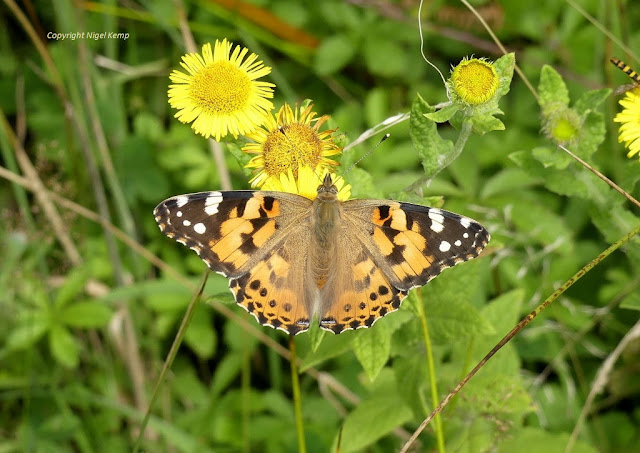Earlier this week, as I walked around one of my favourite Wealden woods, I encountered an extraordinary butterfly and a lifetime first for me.
As I moved slowly past some bramble beds, I noticed a slightly worn looking Silver-washed Fritillary (Argynnis paphia) nectaring on bramble flowers. I barely took much notice of it but as it started moving around the blossom, its wings on either side were clearly different shades. I could see that this was a very special butterfly.
This paphia was gynandrous, meaning that its markings were displaying both male and female traits. More specifically it was a bilateral gynandromorph meaning that it is exactly half male and half female, with the dividing line running down the centre of its body.
Gynandromorphism is an extremely rare occurrence in nature. When a sperm fertilises an egg to form a zygote, a fault can then occur during the first cell division (mitosis) whereby a sex chromosome is lost from one of the daughter cells. In the case of bilateral gynandromorphs, the continuing cell division ultimately produces a butterfly that is half male and half female.
Silver-washed Fritillary (Argynnis paphia)
Bilateral gynandromorph (male on left, female on right)
















